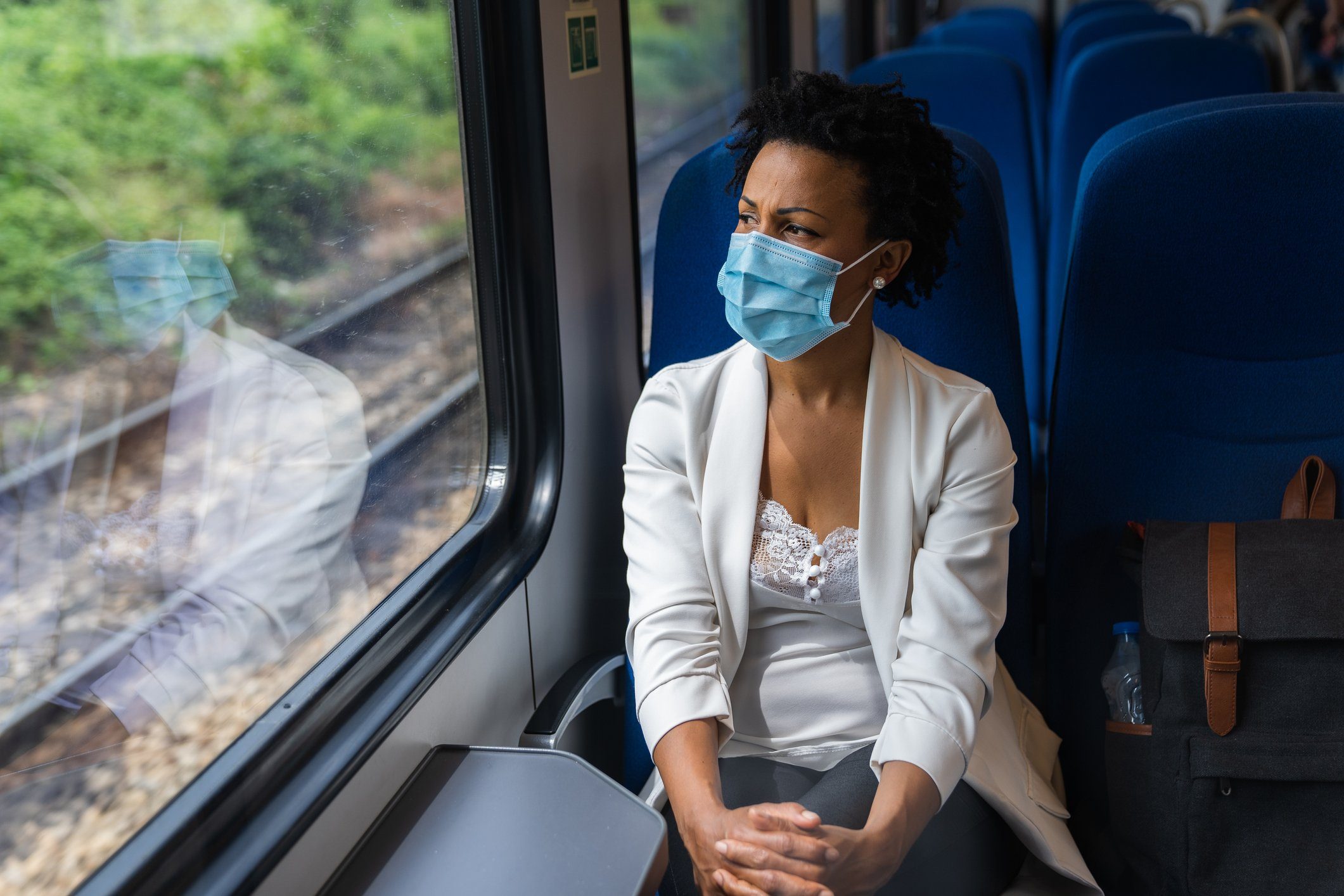How Can I Avoid Catching Coronavirus on Public Transit?
Now that lockdowns are being lifted and people are returning to their workplace, could subways, trains and buses become hot spots for catching coronavirus? The research shows it's possible to avoid this—if we take precautions.

Public transit and the risk of catching coronavirus
While science hasn’t found public transportation to be a major source of catching COVID-19, this doesn’t mean the virus isn’t present on trains and buses—it just means there may be effective means to avoid catching it.
Put your face mask on
“Understand that the virus is still among us, protection works, and we need to use it and be cautious,” says Suzanne Willard, clinical professor and associate dean of global health at the Rutgers School of Nursing in New Brunswick, New Jersey. “It is important that as we see more people around we should not be complacent that the virus has gone away.”
Masks prevent respiratory droplets from being expelled and infecting others when a person talks, coughs, or sneezes, which is the main way the virus is transmitted.
In a June 2020 review in the journal The Lancet, face masks, specifically N95 or similar respirators, were found to be effective at preventing virus transmission. And on some mass transit systems, such as Toronto’s, masks are now required.
If you normally used your train time to scarf down breakfast or have a coffee, that would obviously require removing your mask, so it’s also best to avoid eating or drinking until you’re at your destination to avoid getting sick.
Consider eye protection
The previously mentioned Lancet study also found that eye protection, such as goggles or a face shield, worked to reduce the risk of catching coronavirus. The CDC says COVID-19 can “possibly” be transmitted through the eyes.
What about gloves?
“Gloves work, but hand washing [is important] when you get to your destination,” Willard says. Gloves are effective only if you don’t touch your face: It’s not the virus getting on your skin that makes you sick, but touching your mouth, nose, or eyes with contaminated hands—whether you’re wearing gloves or not.
You also need to take gloves off correctly to avoid contaminating yourself; and you still need to wash your hands when you get to where you’re going. If you’ve touched your cell phone in transit, wipe that down as well.
Try not to touch surfaces—or your face
Whether you’re wearing gloves or not, be careful where your hands go as soon as you enter the station. A secondary way to get sick? “Touching surfaces others have touched,” Willard says.
Many transit systems are implementing more stringent cleaning methods and experimenting with new ways of sanitizing. Still, push turnstiles with your hip instead of your hand, and if you must hold a strap or pole to keep your balance once onboard—you certainly don’t want to be falling into anyone—be aware not to touch your face afterward.
Try to keep your physical distance
Anyone who’s ever been on a crowded subway platform, train, or bus may think keeping six feet apart will be a joke—but with your city and transit system’s help, it might be more possible than you think.
Toronto, for example, is planning to increase service to provide more space, to have floor markings for where people should stand, and to have increased personnel to assist with managing riders.
“Try to be socially distanced,” Willard says. After all, riders will be together in “small spaces, all being in close contact with people who you don’t know where they came from,” she says. For example, instead of squeezing in to get a seat, consider standing in order to keep more distance. The CDC even recommends leaving a row of seats between you and other passengers when possible.
Turn away from people to have the least chance of droplets landing on you, especially if someone is talking loudly, as a June 2020 PNAS study suggests that may increase the likelihood of virus transmission due to the speech droplets being released.
Avoid rush hour
Talk to your boss to see if you can come in and leave early or late as well, and allow plenty of extra time to get to work so you don’t feel pressured to hop on a crowded train when the next, less crowded one may be only moments behind.
And even if you’re in a hurry, wait for everyone to get off before boarding—that’s just good mass transit etiquette anyway.
Walk for at least part of your journey
Even if you can’t walk the entire distance of your commute, consider walking for part of it to reduce the amount time you’re on public transportation—maybe get off before the stop where your subway normally gets more crowded, or if you take a bus and a train just take one and walk the other.
“Walking is great exercise, but if the street is crowded, that can also be a challenge,” Willard says. Some cities are closing roads and creating more space for pedestrians to maintain social distance.
Next, learn the ways shopping will change after the pandemic ends.



